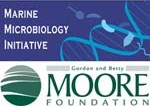The MEGAMER facility has the ambitious goals of promoting the development of remote instrumentation applications to detect ecologically important microbes in conjunction with making resultant data assimilable in predictive mathematical modeling. These two approaches are essential for future global and regional assessment and monitoring of microbes in the world’s oceans. MEGAMER was conceptualized as a means of stimulating integrated marine microbial research activities at UC Santa Cruz, facilitating this research by visiting investigators and UCSC marine scientists, and in general extending facility resources to the local microbiology community united in support of the four major outputs. To date, MEGAMER has extended its resources to almost 100 different users ensuring each is quickly and effectively trained to be fully independent user of any or all of the facility’s state of the art equipment.
Previous Users:
Calla Schmidt, University of San Francisco- In support of Output 1, Dr Schmidt is working to develop a flow cytometric means of enriching a natural isotopic signal in aquatic phytoplankton.
Adina Payton, UC Santa Cruz- In support of Output 1, Dr Payton’s students and post doctoral candidates use flow cytometry to calculate links between specific populations of organisms in the ocean and oceanic chemical processes.
Chad Saltikov, UC Santa Cruz- In support of Output 1, Dr Saltikov’s students use flow cytometry to isolate fluorescent protein insertions in cell cultures.
Manny Camp and David Alexander, UC Santa Cruz
-In support of Output 1, The Camp lab has developed and optimized a high throughput fluorescence-screening assay for use on the flow cytometer that will serve as the platform for identification and characterization of DNA-reactive compounds from a natural products
library. A publication in the Springer series, Methods in Molecular Biology, is pending.
Nick Welschmeyer, Moss Land Marine Lab
-In support of Output 1, Dr Welschmeyer’s student, Shelby Boyer, developed a FISH/flow cytometry methodology: FISH-FLOW: FLUORESCENT JN-SITUHYBRIDIZATION AND FLOW CYTOMETRY TO IDENTIFY PHOTOSYMBIONTS IN CORALS AFTER INDUCED BLEACHING.
Debbie Bronk, Virgina Institute of Marine Sciences
-In support of Output 1, Dr Bronk’s students use FACS capabilities to measure Nitrogen uptake rates in environmental incubated samples. Two publications are in prep from this work:
Baer, SE, J Spackeen, DA Bronk (in prep) Nitrogen uptake rates of low- and high-nucleic acid bacteria from the coastal western Arctic.
Bronk, DA, SE Baer, J Spackeen, (in prep) Phytoplankton and bacterial amino acid uptake kinetics off the coast of Barrow, Alaska as determined by flow cytometric sorting
Ger van Engh, Becton Dickinson
-In support of Output 1, a student from Dr. van Engh’s group used FACS to enrich pico phytoplankton populations over a temporal cycles at a near shore sampling station for high throughput sequencing analysis of rRNA genes to test variability of species diversity in the course of hours and weeks.
Alex Worden, University of Miami and MBARI
-In support of Output 1, Dr Worden assisted us in establishing accurate and consistent means of quantifying seawater samples.
Robert Miller, UC Santa Barbara
-In support of Output 1, Dr Miller uses FACS as a means of enriching marine heterotrophic and phototrophic populations to identify natural isotopic signatures for a various trophic levels of organisms
Kate Mackey, WHOI
-In support of Output 1, Dr. Mackey has used the the Influx flow cytometer to quantify picoplankton assemblages in marine and freshwater sites whose growth is influenced by aerosol induced nutrient influxes.
Henrich Boeger, UC Santa Cruz
-In support of Output 1, Dr Boeger’s group used flow cytometry to detect transcription in reporter proteins in a manner we’d like to eventually adopt in marine phytoplankton. His groups work in the MEGAMER facility is highlighted here.
Dr Chris Frances, Stanford University
-In support of Output 1 and Output 2, Dr Frances has developed probes for the detection of ammonium oxidizing genes from naturally occurring marine Archaea for use on the Environmental Sample Processor and his group has used the flow cytometer in an attempt to isolate specific strains of Archaea from environmental enrichment cultures.
Fitnat Yildiz, UC Santa Cruz
Dr Vanessa Michelou, Hopkins Marine Lab & University of Hawaii
–
Dr Sam Wilson, University of Hawaii
-In support of Output 3, Dr Wilson’s research efforts focused on quantifying the relative contribution of key diazotrophs (cultures of Trichodesmium sp, Crocosphaera watsonii, and Cyanothece sp) to hydrogen production in surface seawater. The collaboration was highlighted by efforts to integrate the in-line integration of analytical equipment to investigate metabolic processes in chemostat, in situ. His work resulted in a number of publications:
Wilson, S.T., Z.S. Kolber, S. Tozzi, J.P. Zehr and D.M. Karl (2012) Nitrogen fixation, hydrogen production and electron transport kinetics in Trichodesmium erythraeum Strain IMS101. J. Phycol. 48:595-506.
Wilson, S.T., S. Tozzi, R.A. Foster, I. Ilikchyan, Z.S. Kolber, J.P. Zehr and D.M. Karl (2010) Hydrogen cycling by the unicellular marine diazotroph Crocosphaera watsonii Strain WH8501. Appl. Environ. Microbiol. 20:6797-6803.
Wilson, S.T., R.A. Foster, J.P. Zehr and D.M. Karl (2010) Hydrogen production by Trichodesmium erythraeum, Cyanothece spp., and Crocosphaera watsonii. Aquat. Microb. Ecol. 59:197-206.
Dr Richard Long, Texas A&M University and the University of South Carolina
-In support of Output 1, Dr. Long’s research activities at MEGAMER focused upon bacterial diversity and activity on marine snow particles and in ambient seawater. His group worked to refine two fluorescence-based protocols that measure bacteria activity at the single-cell level as a
means of measuring DNA synthesis and respiration in cells.
Dr Monika Winder, UC Davis (now at the University of Stockholm)
– In support of Output 1, Dr Winder used flow cytometry and FACS derived whole cell molecular biology assays to better understand the vertical and temporal dynamics of autotrophic picoplankton (APP) in oligotrophic water masses. Her work resulted in the following publication:
Winder M (2009). Photosynthetic picoplankton dynamics in Lake Tahoe: temporal and spatial niche partitioning among prokaryotic and eukaryotic cells. Journal of Plankton Research. 31: 1307-1320.
Dr Alyson Santoro, Stanford University (now at University of Maryland)
-In support of Output 1, Dr Santoro used multi-variant (morphological and genetic) based cell sorting to separate archaea cell from bacterial cells in mixed cell enrichments.
Dr Bethany Jenkins, University of Rhode Island
-In support of Output 2, Dr Jenkins contributed to the development of the suite of nitrate reductase gene specific qPCR optimized for use aboard the ESP molecular biology module.
Dr Tony De Tomaso, Hopkins Marine Lab (now at UCSB)
-In support of Output 1, Dr De Tomaso’s team investigated the use of the size and morphological differentiation potential of scatter properties of flow cytometry to isolate parasitic feature in the primitive chordate organism, Botryllus schlosseri.
Dr Mick Follows, MIT
-In support of Output 4, Dr Fellow’s research group collaborated with MEGAMER researcher Chris Edwards to develop an alternative version of the DARWIN predictive environmental modeling system designed originally for use in the study of open ocean ecosystems that might work to resolve population dynamic in coastal ocean ecosystems.
Jason Affourtit, 454 Inc and Ion Torrent
-In support of Outputs 1, 2 and 3, Mr Affourtit has provided valuable insight as to how best to streamline protocols designed to enable FACS based, whole cell genomics.
Dr Tawnya Peterson, Oregon Health Science University
-In support of Output 1, Dr Peterson refined a method for using the imaging cytometry platform, FlowCam into a viable means of identifying and enumerating various phytoplankton using distinctive morphological parameters as defining elements for differentiating organisms.
Dr John Waterbury, Wood Hole Oceanographic Institute
-In support of MEGAMER’s underlying mission of offering access to molecular and microbiological resources to the marine microbiology masses free of cost, Dr Waterbury transferred a number of isolates from his marine microbial culture collection to MEGAMER and the intellectual know how as to how to maintain these cultures.
Dr Jackie Collier, SUNY- Stony Brook
-In support of Output 1, Dr Collier offered early technical support in designing an effective means of enumerating cells from environmental samples and performing comparisons analysis of chlorophyll composition of various populations of phototrophic microbes based upon light excitation wavelength.
Dr Isabelle Biegala, Mediterranean Institute of Oceanography
-In support of Output 1, Dr Biegala worked with MEGAMER researchers to enable FISH-CARD based probing of cells for use on a flow cytometer.
Dr Chris Lane, University of Rhode Island
-In support of Output 2 and 3, Dr Lane’s explored ways in which to collect environmental samples from marine algae so as to preserve the integrity transcriptional RNA.
Dr James Hollibaugh, University of Georgia
– In support of Output 3, Dr Hollibaugh used fresh seawater to set up and conduct experiments that studied the response of microbial assemblages to reactive oxygen stress. In these experiments plankton assemblages are exposed to varying concentrations of hydrogen peroxide and the plankton assemblage response is monitored over a 24-hour time course.
Dr George Bullerjahn, Bowling Green State University
– In support of Output 2, Dr Bullerjahn’s student, Olga Kutovaya, developed qPCR probes assays investigated the different
mechanisms used by microorganisms to adapt to a low phosphorus environment in the Lauretian Great Lakes. These assays have since been adapted for use in the study of similar organisms in Monterey Bay aboard the qPCR module on ESP.
Dr Ladislav Nedbal, Photon Systems Instruments
– In support of Output 3, Dr Nedbal developed the automated chemostat originally intended for studies involved in Output 3. His group worked with us to resolve toxicity issues associated with growing marine cyanobacteria in the PSI bioreactor.
Dr Matt Church, University of Hawaii
-In support of Output 2, Dr Church’s student Sara Thomas optimized all nitrogenase gene specific qPCR assays for use aboard the ESP deploted at Station ALOHA, Hawaii.
Dr Farooq Azam, Scripps Instute of Oceanography
-In support of Output 1, Dr Azam’s group is working closely with MEGAMER researchers to isolate and characterize a UCYN-A variant found in Southern California waters by means of FACS and molecular biology tools.



